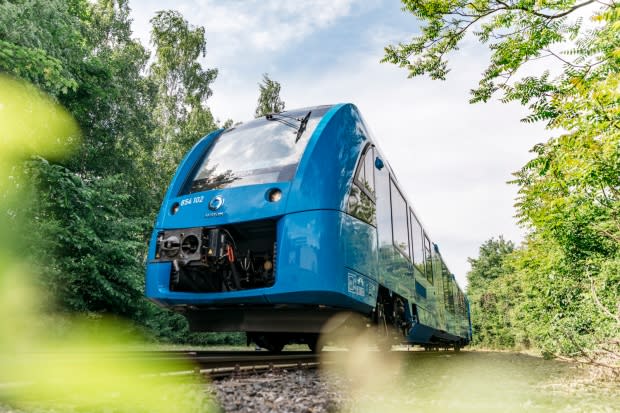Could the Okanagan's transit future be hydrogen powered rail?
A German engineer is in the Okanagan this week to speak at the Kelowna Innovation Centre about a new form of transportation called hydrail and whether it's a fit for the Okanagan.
A hot topic of debate during the municipal election was the idea of bringing light rail transit to the region to help lessen volume on city roads and to connect communities.
Hydrail is similar to LRT, but instead of being powered by overhead electric cables or charged tracks, the technology uses hydrogen fuel cells to produce its propulsion.
"The exhaust of a hydra rail train is water. It's just steam," said Holger Busche, an engineer and scientific government advisor in Hamburg, Germany.
He spoke with Daybreak South host Chris Walker about the benefits of zero-emissions, hydrogen-powered passenger service and whether it could work in the Okanagan.

Homegrown technology
Hydrogen fuel cells use a chemical reaction to produce electricity. In its simplest form, hydrogen will mix with oxygen to produce an electrical current.
The only two hydrail trains in the world operate near Hamburg, Germany. Busche says they're powered by technology developed in B.C.
On Sept. 16, 2018, the very first hydrogen fuel cell trains began passenger service in Lower Saxony.
Two months later, Busche says it's been smooth sailing.
"You hear the people talking in the train because they're used to shouting against the diesel engine and now they are riding an electric train and it's just silent," said Busche.
Could it work in the Okanagan?
Busche says the Okanagan is a prime location for hydrail because of the lack of established rail infrastructure.
"It's much better to start from scratch," he says, adding that for hydrogen-powered trains, regions only need to build the tracks, rather than worrying about costly electrical infrastructure to power the trains.
For those worried about the difficulty of such a project, Busche says the public needs to picture how they want to see transportation in the next 10 years.
"Do we want more car traffic, more traffic jams? Or do we want something that enables us to move around?" said Busche.
Busche says hydrail tracks could even be placed on existing roadways.
You can listen to the full interview below;
Read more from CBC British Columbia

